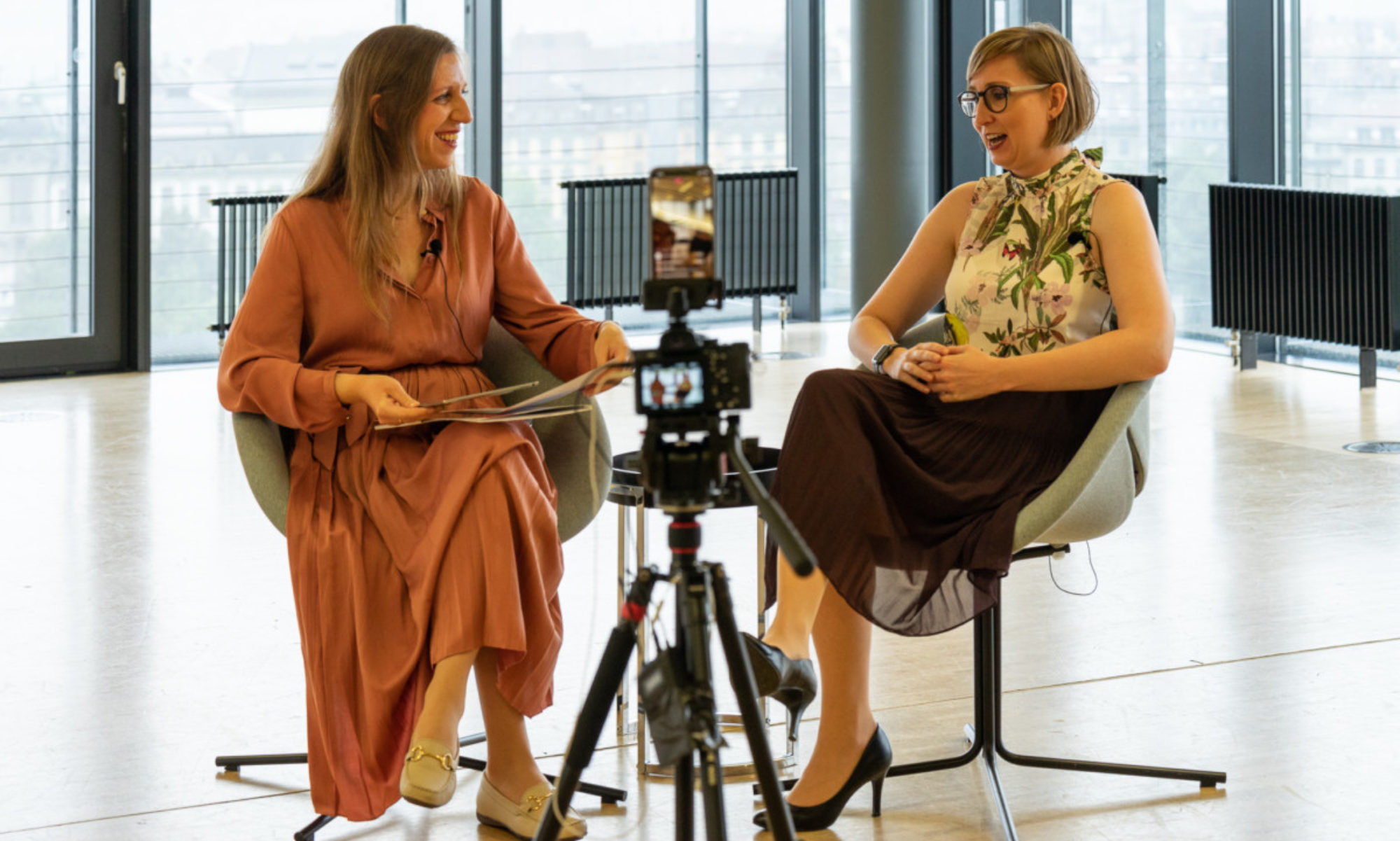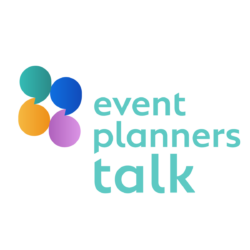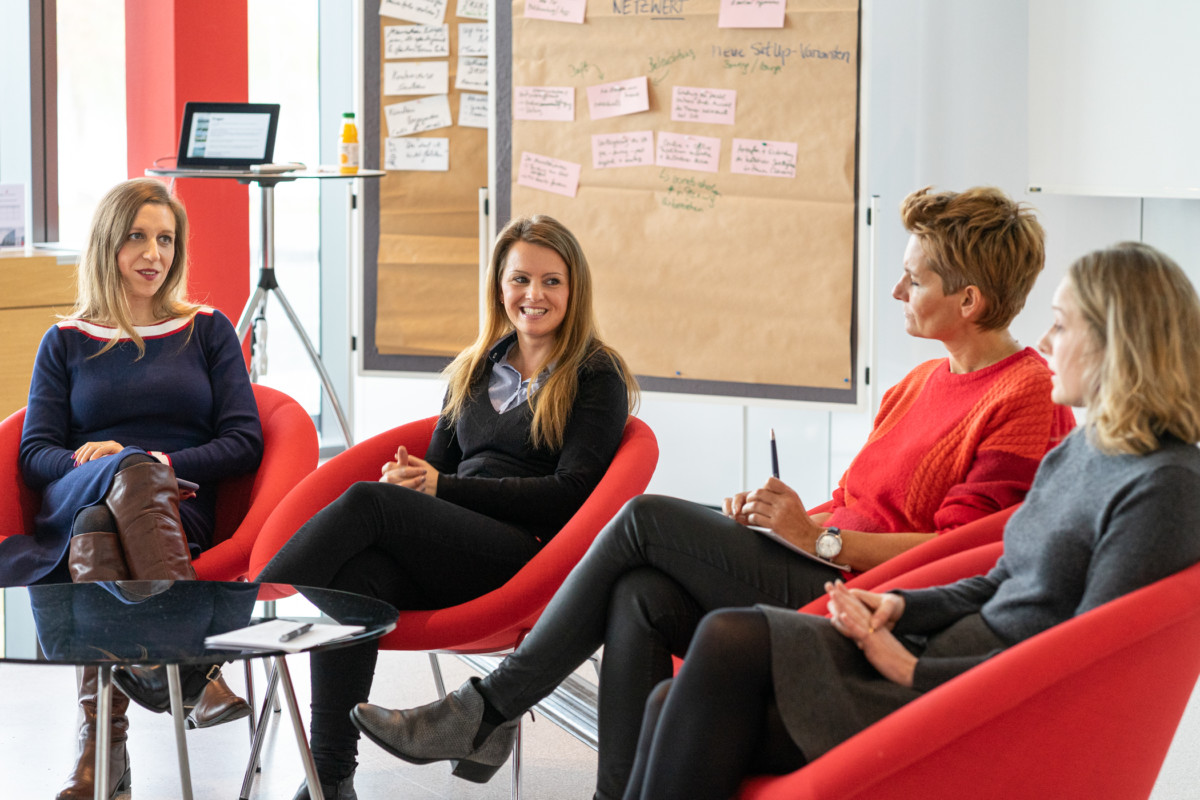Event design is a highly current topic in the events industry. We asked our community on Twitter how they define event design, and the various definitions highlighted how complex the definition and the process is and how it can mean various things to different stakeholders.
One definition that gave a good introduction to our live session in Rorschach, Switzerland was offered by Robert Bagust, Worldwide Congress Manager at Bristol Myers Squibb, who shared that ‘It’s starting with “purpose”. You cannot think about (event) design until you know what it is you are trying to do. Perhaps you are attempting to solve a business challenge; an event is just one option to consider…nail this clearly, then comes design. For the event design phase, it’s about putting into place all the required elements to help you achieve the objectives you’ve set out… the design is then “everything”…’
After covering the topic of event design extensively online on our weekly #eventprofstalk Twitter chat, we hosted a small regional event on the 8th of November 2019 at Würth Haus Rorschach in Rorschach, Switzerland. This session took place as part of the #GrenzenlosesEventdesign educational trip organised by the Destinations Circle networking group and the Convention Bureaus Switzerland Convention & Incentive Bureau, Convention Partner Vorarlberg and German Convention Bureau.
The focus of the discussion this time was how local stakeholders can support event planners to design more impactful events. Our panel included Anja Sachse, co-manager at the St. Gallen-Bodensee Tourism, Anja Gunz, responsible for Sales & Marketing at Convention Partner Vorarlberg and Ursula Kaufmann, responsible for sales at Kongresskultur Bregenz. This session was moderated by Irina Graf, founder of The MICE Blog Event Planners Talk.
From what stage of the event planning do event planners start talking about event design
As mentioned in the introduction, ‘You cannot think about (event) design until you know what it is you are trying to do’, and all panellists agreed that event design can start only when event objectives are defined. According to Anja G., ‘Defining an event objective is the starting point that needs to be addressed consciously. An event format shouldn’t be forced at an event because it’s liked by the organiser, but it has to be the right format for the content and event objectives. For example, a classic theatre-style seating format is one of many and if the aim is to share knowledge, this could be an appropriate choice, and this is event design. Therefore, event design starts very early in the planning—first the event objective, and second the design that will help achieve these objectives.’
For Ursula, event design also begins at the beginning of the event-planning process—as soon as she knows what the event objective is and what should be the takeaways for event attendees when they return home. As a location, they want to be a good host, and a good host needs to give thoughts on how to help their guests achieve their objectives. They try to understand the needs of event planners prior to even approaching them, and when they understand their specific objective, they can co-create the event.
According to Anja S., from a perspective of a convention bureau (CVB), they can provide information up to the point when the planners choose the respective suppliers to continue the planning with. Anja S. suggests for the CVB to be able to put themselves in planners’ shoes and understand how it is to be in their situation and what information they would need. Don’t leave the planners to Google for hours regarding what the CVB might know off the top of their head. The information that can be found easily online, such as a venue search, should be available and easily found. Some CVBs have a dedicated venue search function already on their website that can filter the requirements.

There is a need for more education about the role of the CVB
The CVBs function as neutral consultants and shouldn’t be perceived as if they want to sell something. They can support event planners to a significant extent as the local partners on the ground. CVBs are there as long as event planners need their support, regardless of the phase of the event planning, and the scope of support can range from a small hotel tip to more extensive support on event design. While venue searching is becoming commoditised on the Internet, CVBs have an opportunity to be seen as a trusted partner who can provide support with an event concept. The role of the CVB is evolving; it’s not enough anymore to be a contact person for the location or venue because event planners can obtain this information online. CVBs need to bring more value; this is the chance for the CVB for example to provide support for event design concepts.
CVBs can also be in the position to try something new if they haven’t done it before. A way to do so is to organise their own events, therefore putting them in the position to be able to recommend similar events to future customers. This is the case for the #GrenzenlosesEventdesign. This approach is highly beneficial for all of the local partners with respect to gaining this experience and to be on the same eye level with their clients in order to be taken seriously.

Event planners should be open to consultations with the CVB
Event planners should have a certain level of readiness and trust to speak openly with the CVB. They should be ready to share what they have done before, and perhaps even be ready to change the way they have been doing things in the past and be ready to try new things. They ought to be open minded about being consulted. Hence, there should be mutual trust. This can be difficult in terms of to what extent and more importantly, how the CVB can ‘intervene’ to suggest their own ideas. In reality, until this conversation is about to take place, there must be more groundwork to be done about the role of the CVB and for the event planners to understand that they possess this competency. It was mentioned that it could take years to build this trust.
It’s believed that in order to conduct a transaction in B2B, it’s necessary to have between 5–12 interactions, whether that be face to face or online. CVBs should look out for these opportunities to keep in touch with event planners. It was advised that when a request comes in, it’s ok to pick up the phone for a short chat or use FaceTime to break the ice. CVBs should ask questions (about the event) and demonstrate their competence, showcasing that they know all the local partners and suppliers at the destination. Open communication is key to offering where and how the CVB can help. The client can then decide how much they want the CVB involved in their project.
Examples of event design
Anja S. shared that they organise local events for their members. Thus, the members allow themselves to be consulted and trained by the CVB. The second reason for this event is to exchange knowledge and expertise among themselves.
Ursula shared that venues should also organise their own events on their premises. For five years, the Kongresskultur Bregenz had their own VLOW Festival about communication, design and architecture; they initiated it to gain the experience and try different formats. The next phase of their own events will be launched this year and is called LandStadt 2020, where the venue is highly involved in the event design. Additionally, they have recently begun offering ‘Event Planning Sprints’, which on their website is described as ‘Your event concept will be further developed in a short space of time by a heterogeneous team using design-thinking methods. Through its close association with micelab:bodensee, Kongresskultur additionally can call on a wide network of creative and innovative professionals.’
Ursula shared the experience that ‘For a location, it’s also a challenge to get into the planning process early because it’s usually from the planner’s perspective not the first point of contact. After internal analysis, it became clear for us that this needs to be communicated. If you don’t say, no one knows. There must be more than just a “we-can-consult-you” approach, and the Event Planning Sprints concept was well understood by event planners. For example, our regular client who was interested in revamping their event uses this workshop to bring fresh air to the existent event format. In such cases, the client is involved from the very beginning, and we supported them in getting the local stakeholder into the planning process too, and for all to develop the new format together.’
Anja G. shared how they are embracing digitalisation. One year ago, the Convention Partner Vorarlberg developed and launched the Convention App Vorarlberg app. It offers events that take place in Vorarlberg with a customised package to the type of events (sport, culture, congress and exhibition). The Convention Partner Vorarlberg wants to help organisers initially test the app free of charge with respect to how it can support their events. But that process serves the purpose of rethinking the communication strategy of an event as well. Hence, it starts already pre event when the delegates can network via the app, presenting the sponsors, share ‘push notifications’ via the app, offer an internal chat function etc. This (digital) process is also part of event design.

Is event design a question of budget?
For Anja S., event design is one of her job requirements. For a long time, it has been a deliberate aspect of her work as well as indirectly because there should be ‘leitmotif’ to an event. Yes, there is a point where the budget reaches its limit, but also with a smaller budget there are opportunities to produce an event that has a consistent central theme.
According to Anja G., the art of event design is ‘What can be achieved with the given budget’.
Some ideas don’t have anything to do with the budget but involve creating emotional moments for people. The audience commented that ‘There are “gimmicks” that cost thousands of euros, but on the other hand, there are moments where delegates can converse and look at each other, and this don’t cost anything—these are the moments that stay in the memory. There is no correlation between money and touching people emotionally.’
Further, audience discussion touched on return on investment, ‘The stakeholders who are paying for the event are part of the event design, and they can decide how to spend the money. There is an area of conflict between innovation and simplicity because “The Bait Must Attract the Fish, Not the Fisherman.” For some, it might be enough to reach the people emotionally, but for corporations who want to be perceived as highly innovative, it is not enough, and expensive technology could be a solution. Touching people emotionally might be the end goal, but it’s not the intention of the corporate stakeholders at the moment.’
Another aspect that was suggested is that ‘It depends on the delegate personas. For someone who needs to see, taste and touch, there should be other elements at the event, such as pleasant-to-touch table cloths or furniture material, which can be simple but yet pleasant—this approach can also fulfil emotional needs.’
Further discussion was about to what extent tech products can create emotions. Apple was mentioned and the emotional impact it creates at its product launches and the product itself when individuals purchase it; from packaging to usage. Tech often involves pure emotions; therefore, it has to be integrated correctly in the event design. But eventually, it needs to be determined who the stakeholders are and how to reach them emotionally.
It was also countered that the event should please the end consumer (the attendee) not the sponsors because if attendees don’t come anymore, there is no event. This is easily said than done because the decision-makers have the money.
One audience member suggested that events need to have a surprise element. For example, that could involve looking for locations that are not usually accessible to the general public or providing a unique storytelling element. Food can also be regional to add to the local flair. When people attend events internationally, they only rarely have the opportunity to explore the locality, so organisers can integrate the local elements and stories into the event. The WOW effect can come from different directions; the location can be a WOW effect, and the people can create a WOW factor. One example was shared that involved a corporate company training their engineers to become speakers (engineers frequently don’t have high-level presenter skills). They were trained professionally to polish their presentation skills, involving a reduction on their reliance on PowerPoint and shortening their speech. The WOW effect here was that their colleagues got to know them differently, not as engineers but as presenters. At first, the engineers could think that they would fail as presenters, but it gave them an opportunity to shine in a new area for them. People want to get to know other people; therefore, when there is also a trend towards digitalisation, we should be careful with categorising personalities.

Event design requires time. How to approach this process when there is a short lead time towards an event?
According to Anja S., ‘It’s through a relationship, to communicate to the client quickly that the CVB is a partner they can trust because the CVB has extensive knowledge of the region’. When a previous site visit is not possible, the trust should be established immediately via other channels.
According to Ursula, the venues need to be creative. That can be for example taking the client on a virtual site visit via FaceTime on a mobile. Audience discussion also mentioned virtual reality (VR), but it’s not suitable for everyone (cost attached to producing the material or the sickness effect created after wearing VR goggles); therefore, venues also need to be online on social media channels where planners can gather already initial information and get an idea of the location or destination through videos and photos. It was also suggested to show full rooms rather than empty spaces.

How can agencies help the CVB?
The final discussion question was how agencies can help CVBs. It was suggested that agencies also need to understand each other in terms of how they work and further to respect the work that goes into collecting information for the planners. It was also advised to let the CVB get involved as soon as possible. Another idea was to host regular meet-ups for agencies, CVBs and their members and talk openly about the industry.
The agencies shouldn’t see the CVB as a competitor but instead as a partner, take the advice seriously and work collaboratively. And lastly, familiarisation trips are a highly effective way to get to know the local stakeholders personally and to cover a large amount of information in a short period of time. It was summarised that trust is key in collaboration, and it can reduce complexity.


